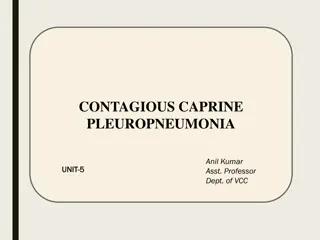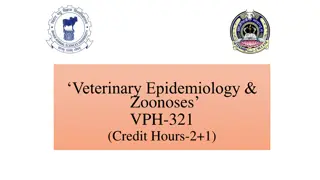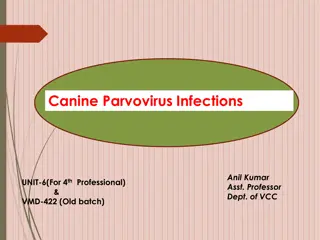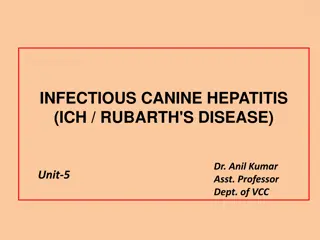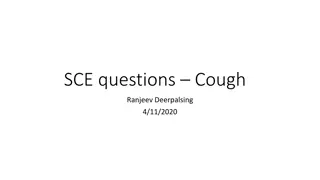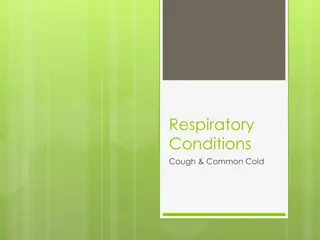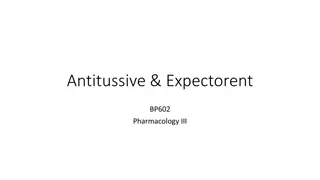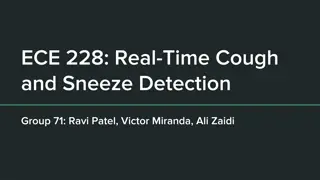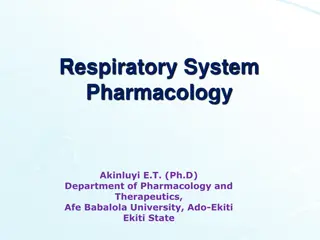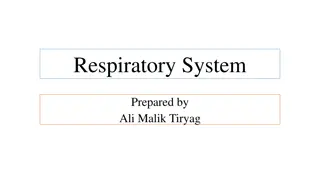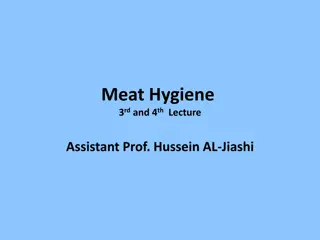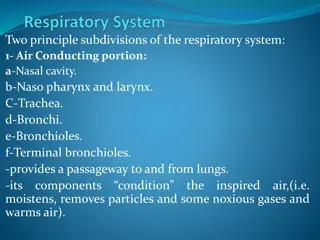Kennel Cough: Contagious Canine Respiratory Disease Overview
Kennel Cough, known as Canine Infectious Tracheobronchitis, is a highly contagious respiratory disease affecting dogs, characterized by acute tracheobronchitis and a paroxysmal cough lasting several days. It is caused by various infectious agents, including Canine Parainfluenza Virus and Bordetella Bronchiseptica. Transmission occurs through fomites, and clinical signs include a dry cough, mucus production, and nasal discharge. Diagnosis involves exposure history, clinical signs, haemogram, and thoracic radiography.
Download Presentation

Please find below an Image/Link to download the presentation.
The content on the website is provided AS IS for your information and personal use only. It may not be sold, licensed, or shared on other websites without obtaining consent from the author.If you encounter any issues during the download, it is possible that the publisher has removed the file from their server.
You are allowed to download the files provided on this website for personal or commercial use, subject to the condition that they are used lawfully. All files are the property of their respective owners.
The content on the website is provided AS IS for your information and personal use only. It may not be sold, licensed, or shared on other websites without obtaining consent from the author.
E N D
Presentation Transcript
Diseases of Respiratory System(Class-4) (Kennel cough/Canine Infectious Tracheobronchitis (ITB) ) Dr. Ranveer Kumar Sinha Assistant Professor cum Junior Scientist E-mail: ranveervet@rediffmail.com Department of Veterinary Medicine Bihar Veterinary College, Patna 800 014 (BASU, Patna)
INTRODUCTION Def: It is a collection of highly contagious infectious diseases of the canine respiratory tract that cause acute tracheobronchitis and sudden onset of a paroxysmal cough lasting several days. Etiology: Two most important causes of canine ITB are Canine parainfluenza virus (CPIV) and Bordetella bronchiseptica Other infectious agents occasionally isolated from coughing dogs include Canine adenoviruses (especially CAV-2), canine herpesvirus, reoviruses (types 1, 2, and 3), and mycoplasmas
Transmission Fomites (e.g., personnel, cages, food and water bowls) Dogs infected with CPIV or CAV-2 shed the virus for only 1 week following recovery However, dogs infected with B. bronchiseptica or mycoplasmas can become chronic carriers with persistent shedding. Pathogenesis: Incubation period is 5 to 7 days. The primary target of these agents is the upper airway epithelium, which result in epithelial injury, acute inflammation and dysfunction of the airway cilia.
CLINICAL SIGNS Dry, harsh, hacking cough is due to tracheobronchitis Increased production of mucus. Cough may be high-pitched because of laryngitis and swollen vocal folds. Cough may be more frequent during exercise, excitement, or changes in temperature and humidity of inspired air. Cough may be elicited by tracheal palpation or pressure from the collar. CLINICAL SIGNS: Mild, serous, or mucopurulent naso-ocular discharge can be seen. Typically, affected dogs continue to eat, remain active and alert, and are non febrile. In severe cases, anorexia, depression, and fever may be present.
DIAGNOSIS Based on exposure history and clinical signs, especially the sudden onset of a severe cough in a previously healthy dog. Haemogram: Mild ITB: CBC is usually normal or shows a stress response (mature neutrophilia, lymphopenia). Severe ITB: Neutrophilic leukocytosis with a left shift is seen with complicating pneumonia. Thoracic Radiography: Mild ITB: Usually normal; a mild increase in interstitial lung density is seen occasionally. Severe ITB: Interstitial and alveolar pattern with lobar consolidation is seen with complicating bronchopneumonia.
DIAGNOSIS Airway Cytology : Evaluation of airway cytology is only indicated in severe, febrile, or complicated ITB. Obtain specimens by transtracheal aspiration, endotracheal tube lavage, or bronchoscopic lavage or swab. Findings include increased mucus, mucopurulent exudate Cultures : Nasal swabs or tracheobronchial specimens can be cultured for Bordetella and mycoplasma. Virology and Serology : Virus isolation can identify CPIV and CAV-2 from nasopharyngeal or tracheal swabs.
TREATMENT Antibiotics : Doxycycline (10 mg/kg PO ) for 2 to 4 weeks; effective for both Bordetella and mycoplasma Amoxicillin/K clavulanate (12.5 25 mg/kg POq12h) for 2 to 4 weeks Azithromycin (5 mg/kg PO, once daily) for 5 to 7 days. Others: enrofloxacin, trimethoprim/sulfamethoxazole Antitussives : Hydrocodone (0.22 mg/kg PO q6 12h) Butorphanol (0.55 1.1 mg/kg PO q6 12h). Corticosteroids : Prednisolone 0.25 0.5 mg/kg PO q12h
TREATMENT Bronchodilators : Theophylline: Dog: 10 mg/kg PO q12 h Albuterol: Dog: 50 mg/kg PO q12 h Terbutalin: Dog: 1.25 5.0 mg/dog PO q12 h Supportive Care : Provide adequate fluid intake, airway humidification, nutritional support, and rest.
PREVENTION vaccination and kennel management practices Vaccination : routine canine vaccination (CAV-2 and CPIV). Kennel Prevention : Avoid overcrowded, high-density confinement Isolate infected (coughing) animals. Caretaker hygiene to prevent fomite spread. Proper kennel ventilation. Use disinfectants such as sodium hypochlorite, chlorhexidine, and benzalkonium Cl.



